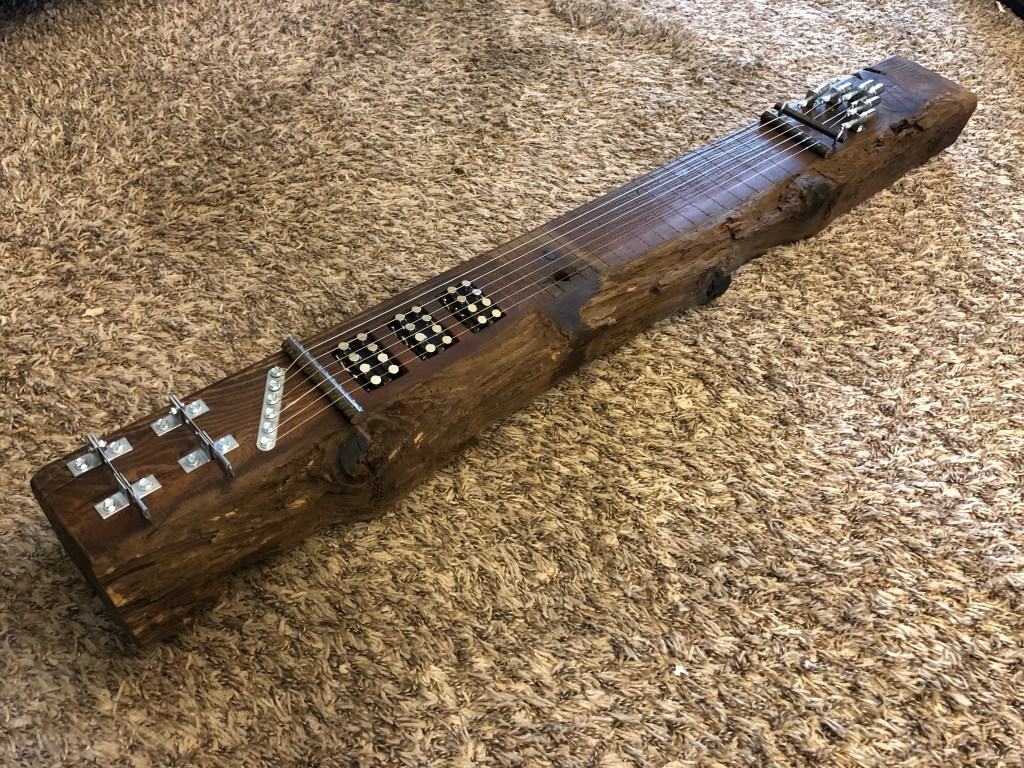


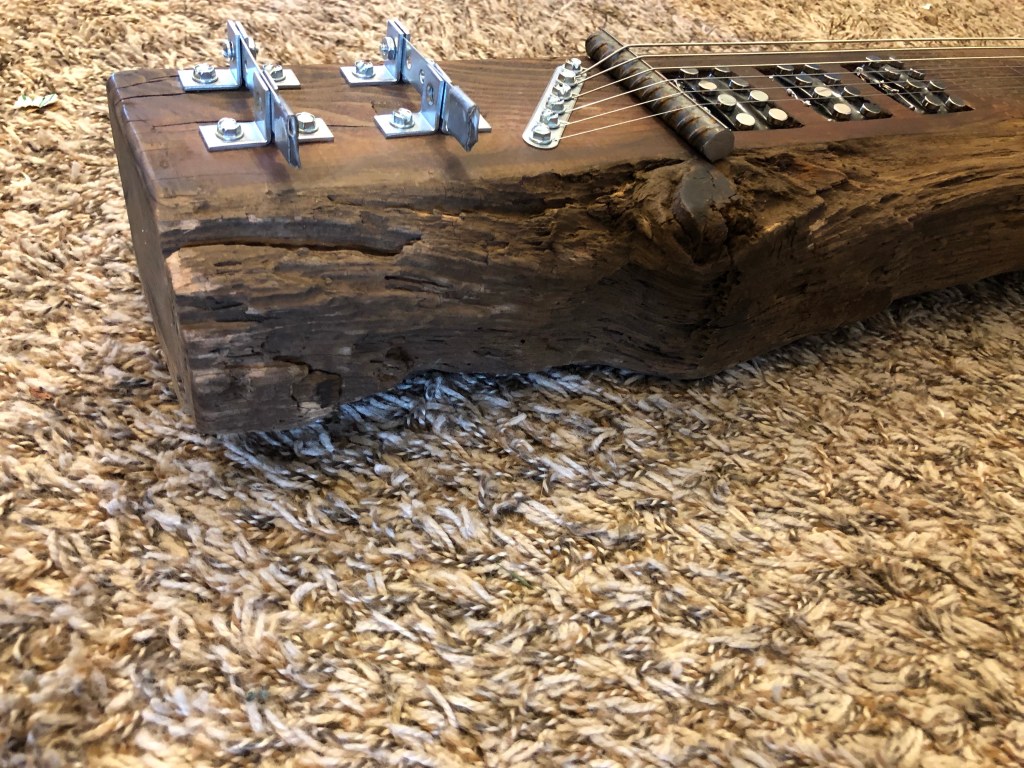


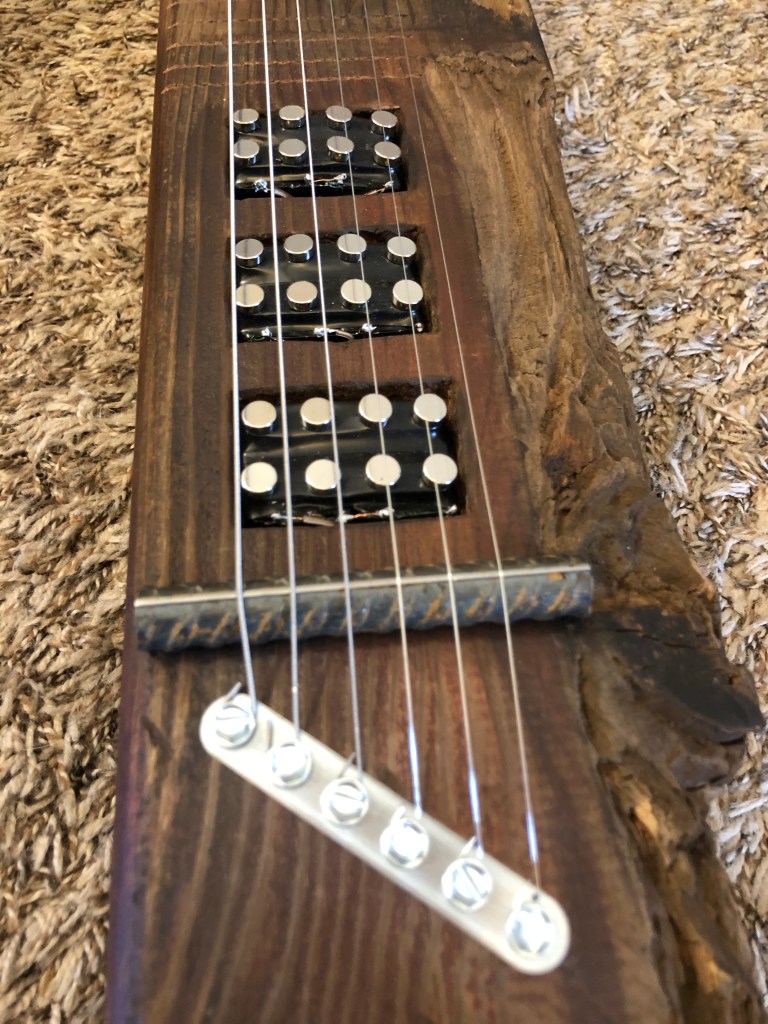
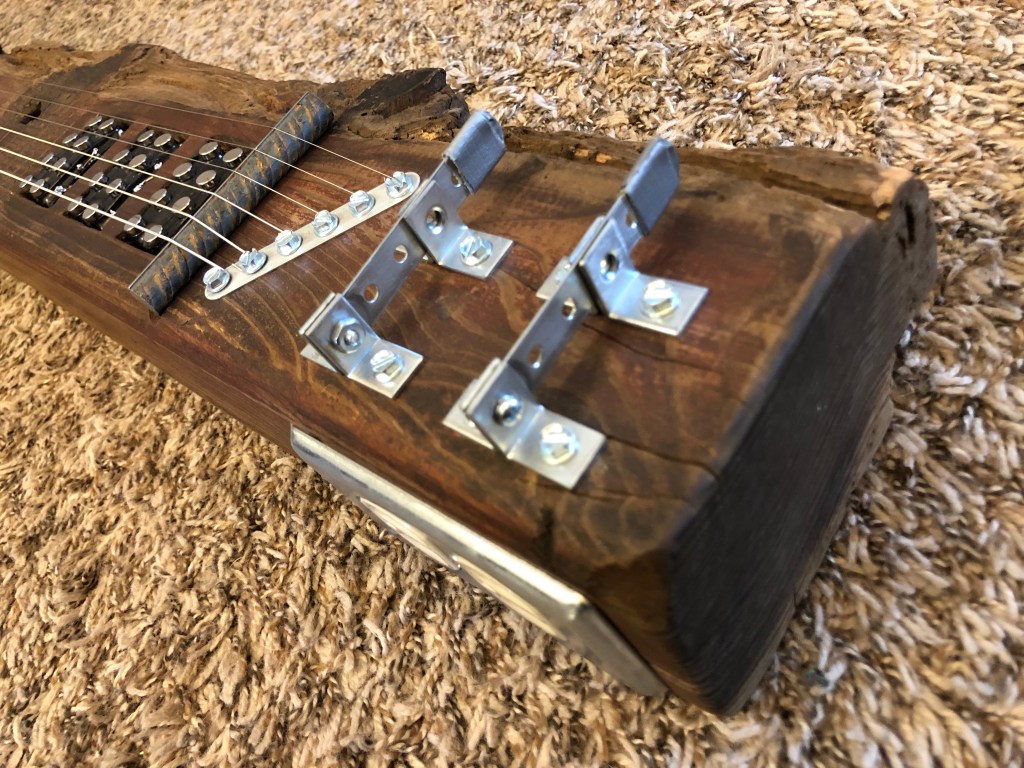
Several years ago I purchased a used Rainbow Clubhouse Playset for my son. The deck had rotted out, so I kept all of the good pieces and added new wood to replace the bad pieces when I rebuilt it in our backyard. The rejected pieces lay in a small pile for years until one day I pulled out an eroded, ant eaten beam that seemed perfect for making a rustic steel guitar—with pickups, tuners, switches and jacks made completely of repurposed materials.
Video:
Check out this quick and dirty video. I couldn’t record in stereo, so I ran the high three strings direct to the amp and ran the low three strings through a distortion pedal, so that it would differentiate between the left and right channels. Enjoy!
Body

I hosed the piece of wood off and poured detergent into all of the ant holes to make sure everything was dead. An orbital sanded worked perfect for sanding the areas that could be smoothed and a balsamic vinegar and steel wool mixture added a nice dark finish to what I believe is cedar.
This hunk of wood has sat in my basement for at least two years waiting to be started, because I didn’t have a clear image of what I wanted to do. I knew I wanted all of the components to be handmade or repurposed items, but until now it didn’t seem cohesive.
Pickups

After completing my most recent cigar box guitar build, it became clear that I needed three pickups—two to mimic a Les Paul neck/bridge configuration and a stand-alone middle pickup to carry the stereo sound. Each would be wired to separate jacks for complete isolation, which would be necessary for achieving the flexibility I desired.
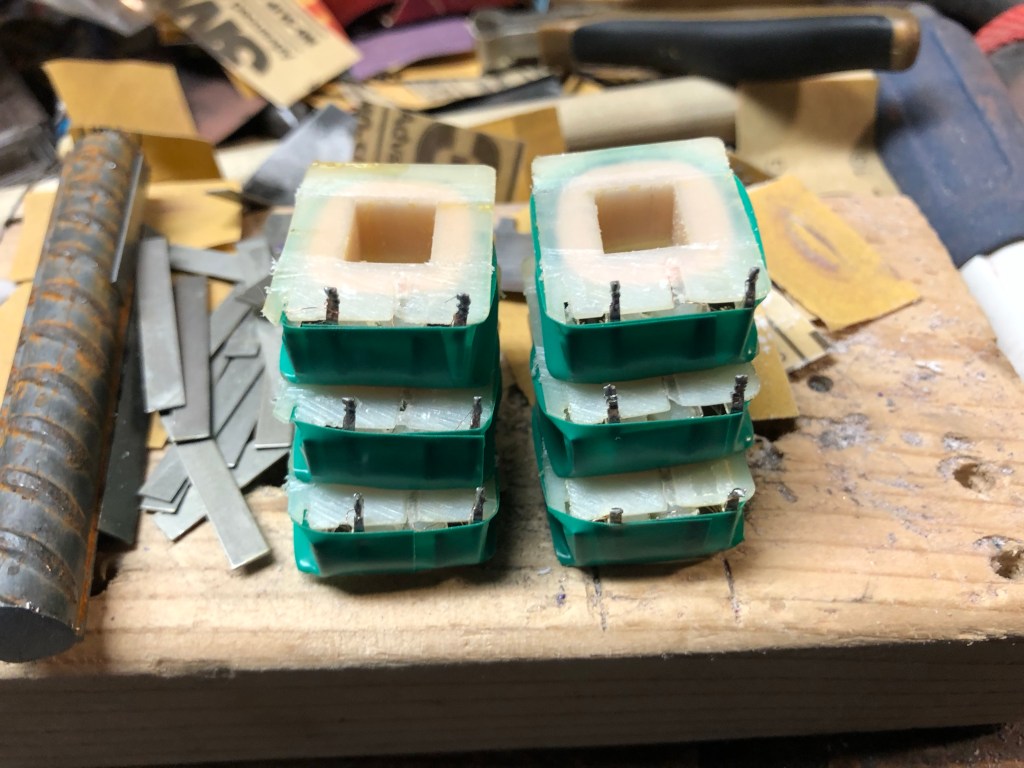
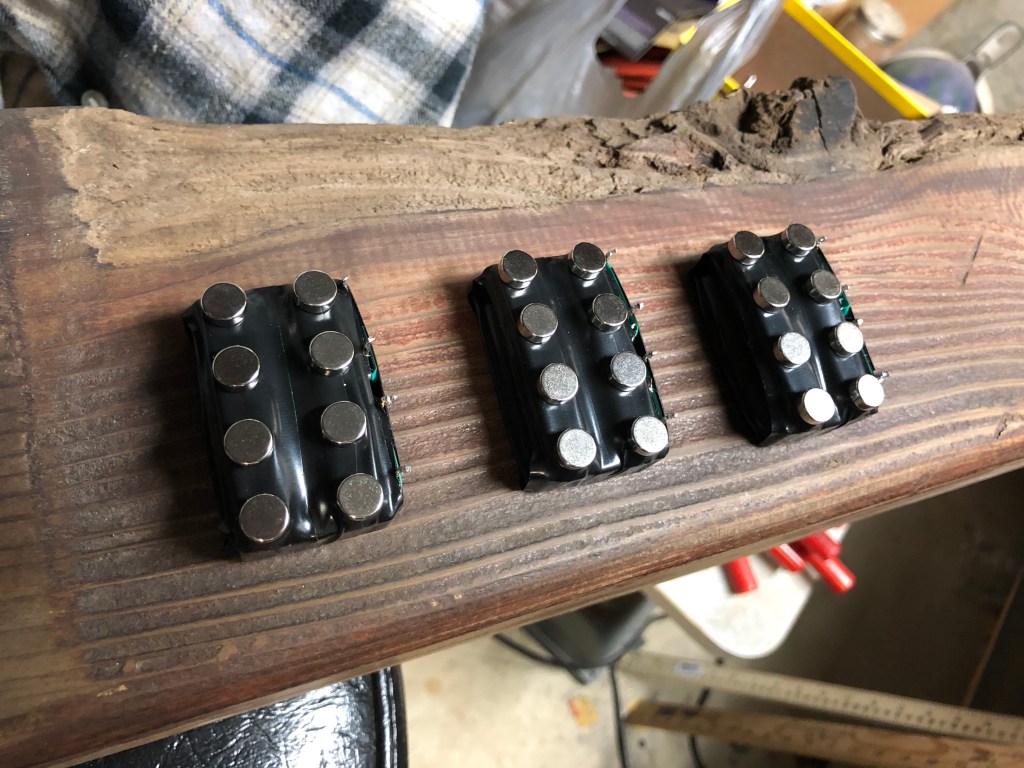


The pickups are made from copper coils harvested from 9v adapters. Neodymium magnets are added to create a basic pickup. It takes two coils to make a 6-string pickup which is perfect for making a stereo pickup, because each side of the pickup can be isolated and wired separately to a stereo jack or two mono jacks.
Switches
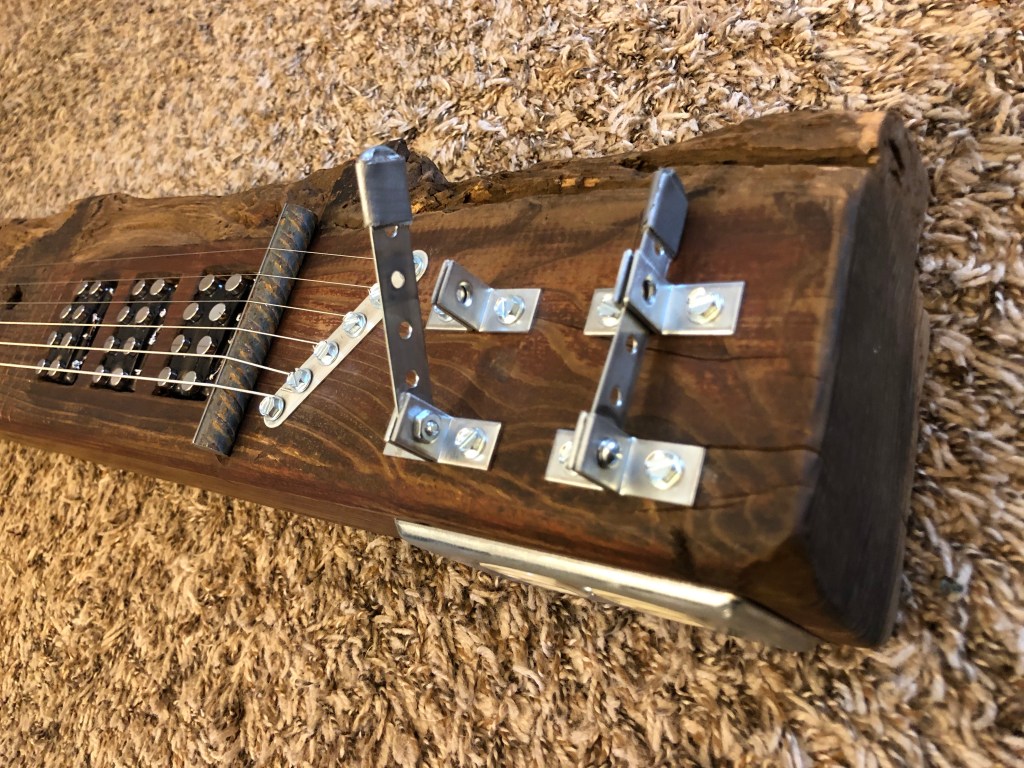
The two knife switches, for the neck and bridge pickups, are each made from four two-hole 90 degree angles, a 6-hole mending plate and a nut and bolt. They are fastened to the body with four machine screws each. The 90 degree angles on the receiving side of the knife bar are lightly filed to a small angle making it easier for the bar to slip in between them. Each switch will function as a SPST switch and the tip is insulated with duct tape to inhibit noise created by touching the circuit.
Output Jacks and Modified Cords


A duplex outlet was used for the stereo and mono output jacks. The neck and bridge pickups were wired through the switches to the mono jack and the middle stereo pickup was wired directly to the stereo jack. Both jacks were separated by cutting connecting tabs on either side of the connection plates.
Each cord is designed relative to how the pickups are wired. Since the neck and bridge pickups only require two connections, I used a two-pronged replacement electrical cord and added a 1/4” mono TS plug.
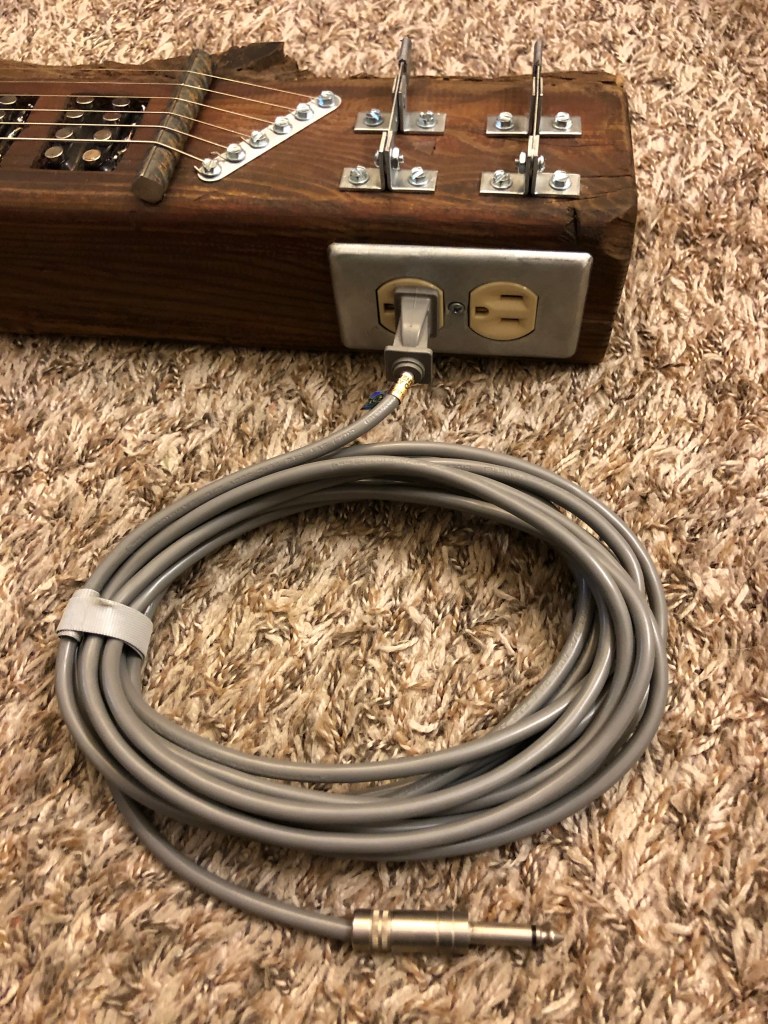

The middle, stereo pickup required three connections to easily split into two cords with 1/4” mono TS jacks for plugging into two separate amplifiers. The hot wire of the left side pickup was connected to one blade, the right pickup to the other blade and a the ground wire of both pickups to the ground prong.



The cords for the stereo pickup consist of a three outlet extension cord that plugs into the guitar and two modified electrical three-prong extension cords, each with 1/4” TS mono plugs. The two modified cords will be wired differently, one specifically for the right side and the other for the left. When used together all three cords will produce a stereo spectrum.
Tuners, Bridge, Nut and Fasteners
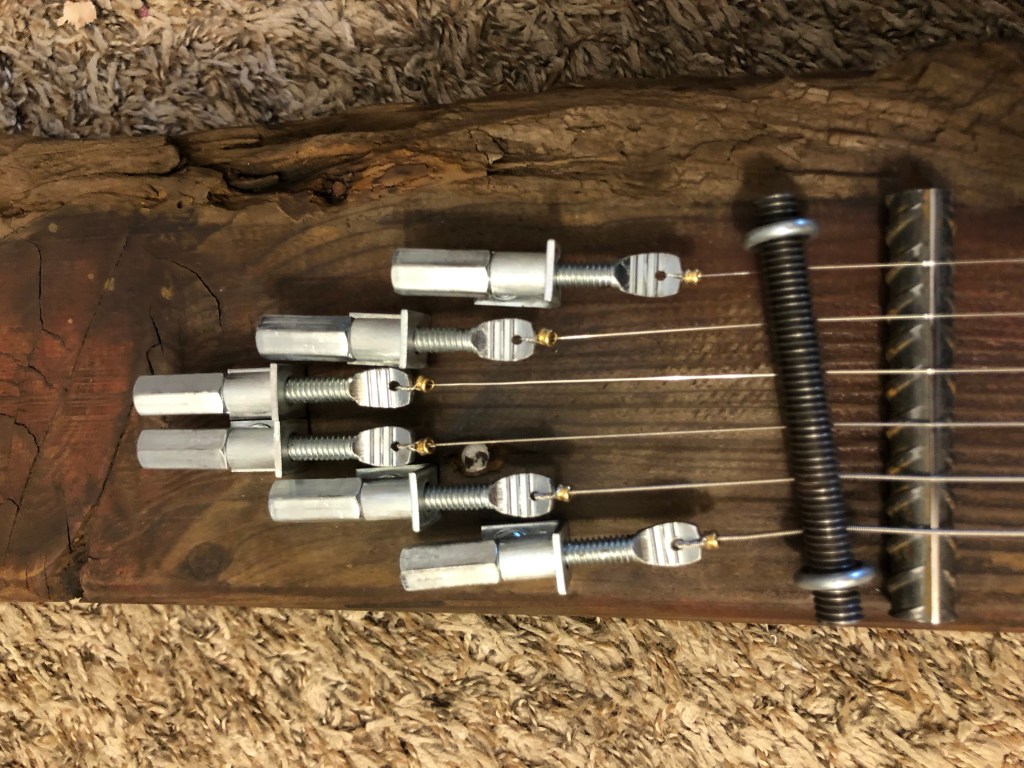
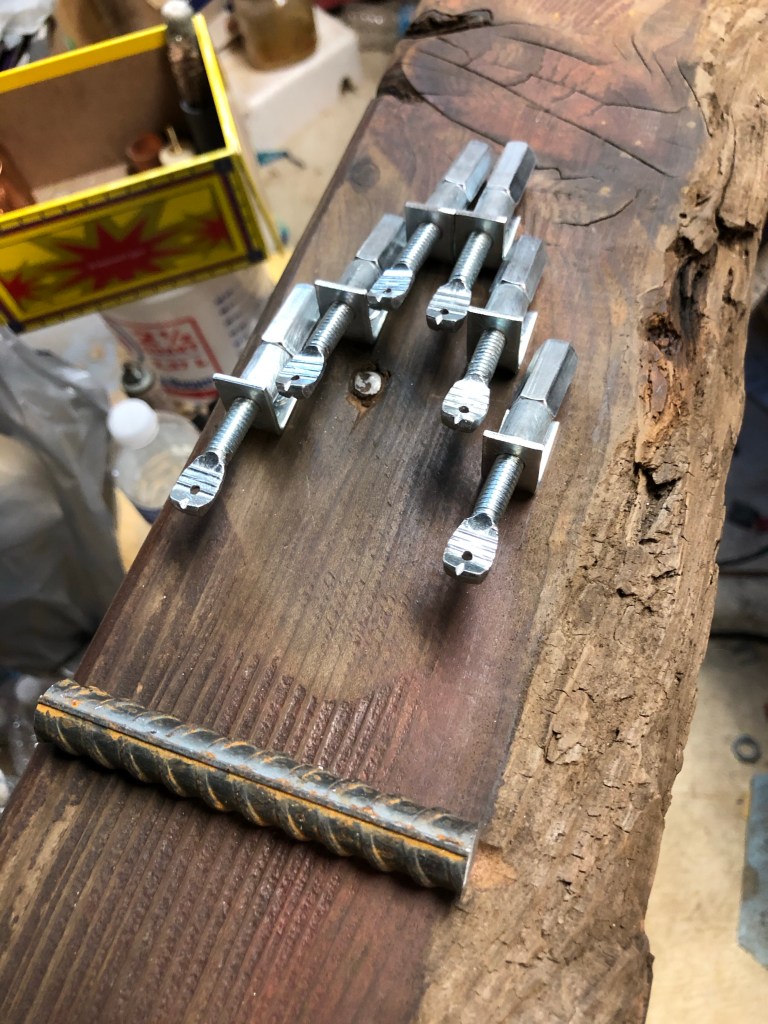
The tuners are made from two-hole 90 degree angles, shaped thumb screws, 1/4”x1/2” steel sleeves and rod nuts. They are fastened to the guitar with sheet metal screws and are turned slightly to space the strings properly.
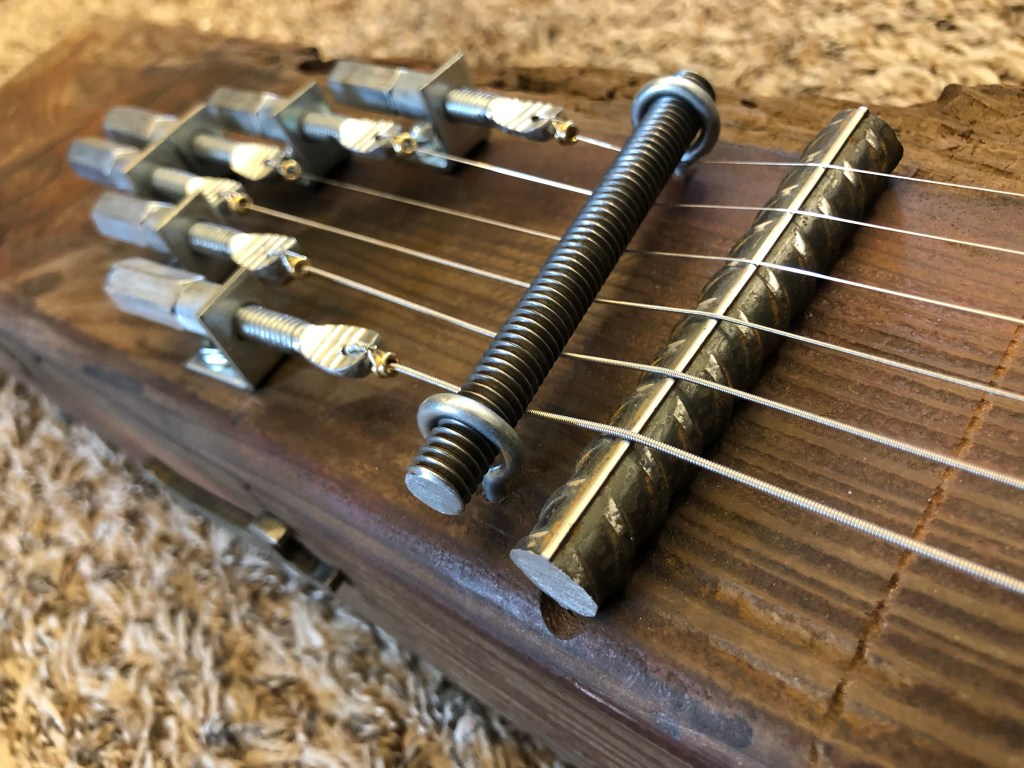
The nut and bridge are made from 1/2” rebar, which are set in small, carved grooves spaced to 24-3/4”. The strings are fastened to the body, behind the bridge, with sheet metal screws set in a 6-hole mending plate.
Between the nut and the tuners, two eye screws set on either side of the strings and a piece left-handed thread rod pushes the strings right across the nut.
Tuning Wrench

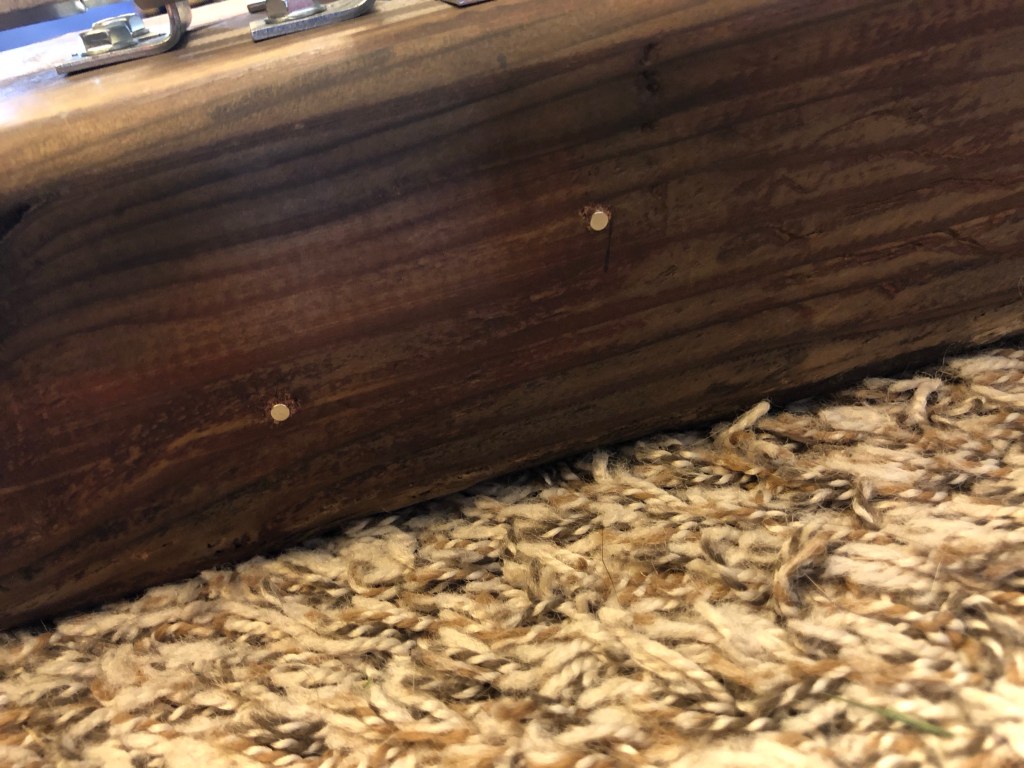
A small wrench tunes the strings via the rod nuts. Two stacks of small neodymium magnets are inset into the back of the body, near the tuners, and can hold the wrench when not in use.
Final Notes:
This build was an exercise in using all handmade and unorthodox parts, with the exception of strings. I was happy with how this guitar turn out, especially the option to use mono or stereo output.
Thanks,

